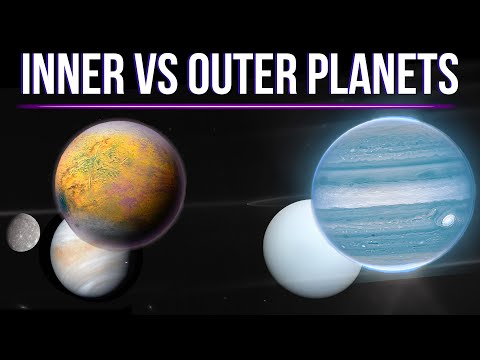What Is The Atmosphere Of The Inner Planets: Unveiling The Secrets
Why Are Inner Planets Rocky And Outer Planets Gaseous?
Keywords searched by users: What is the atmosphere of the inner planets what is the atmosphere of the outer planets, Inner planets là gì, diameter comparison of inner planets, Outer planets, the inner planet with the most moons, Planets are large bodies that rotate around the sun, terrestrial planets, What is the outer planet
What Is The Atmosphere Of Each Inner Planet?
The atmosphere of each inner planet in our solar system is influenced by its proximity to the Sun and is primarily composed of specific gases. These inner planets, which include Mercury, Venus, Earth, and Mars, are all situated relatively close to the Sun. Each of these planets has a distinctive composition in their atmospheres, with two or three key constituents dominating their makeup.
For instance, Venus and Mars possess atmospheres where carbon dioxide and nitrogen are the predominant gases, accounting for over 98% of their atmospheric composition. On the other hand, Earth’s atmosphere is primarily composed of nitrogen and oxygen, with these two gases making up around 99% of our planet’s atmosphere. Understanding the unique atmospheric compositions of these inner planets is crucial for comprehending their distinct environmental conditions and potential habitability.
What Is The Atmosphere Of The Outer Planets?
Let’s provide a more comprehensive explanation of the atmospheres of the outer planets to help readers better understand the topic:
The atmospheres of the outer planets, which include Jupiter, Saturn, Uranus, and Neptune, exhibit distinct compositions. Jupiter and Saturn, the gas giants of our solar system, have atmospheres predominantly composed of hydrogen and helium. However, researchers have discovered evidence suggesting the presence of various hydrogen compounds within their atmospheres, such as methane and ammonia.
On the other hand, Uranus and Neptune, often referred to as ice giants, have atmospheres primarily composed of hydrogen compounds, including water, methane, and ammonia. In addition to these hydrogen compounds, they also contain smaller traces of hydrogen and helium, as well as elements like metals and rocky material. This combination of elements creates a complex and dynamic atmosphere on Uranus and Neptune, making them unique among the outer planets.
In summary, the outer planets’ atmospheres vary in composition, with Jupiter and Saturn being dominated by hydrogen and helium, while Uranus and Neptune have a mixture of hydrogen compounds, along with smaller quantities of other elements, giving rise to their distinctive atmospheric characteristics.
Categories: Details 36 What Is The Atmosphere Of The Inner Planets
See more here: taomalumdongtien.net

They should observe that the inner planets all have nitrogen and carbon dioxide, except for Mercury. They should note that the gas giant planets have abundant helium, hydrogen and methane. You may wish to explain that planetary atmospheres have changed through time, using the Earth as an example.Most of these bodies lie close to the sun. Most of the planets in our solar system have two or three constituents that make up most of the atmosphere. For example, Venus and Mars have more than 98% of their atmosphere in carbon dioxide and nitrogen, while Earth has 99% of its atmosphere in nitrogen and oxygen.Atmospheres. The atmospheres of Jupiter and Saturn are made almost entirely of hydrogen and helium, although there is some evidence they contain hydrogen compounds. Uranus and Neptune are made primarily of hydrogen compounds, with smaller traces of hydrogen, helium, metal and rock.
Learn more about the topic What is the atmosphere of the inner planets.
- Discovering the Atmosphere on Different Planets
- The Composition of Planetary Atmospheres – NASA
- The Outer Planets: Giant Planets: What Are They, and Where Are They?
- What inner planets have almost no atmosphere? – Vedantu
- Escape of an Atmosphere – Astronomy Notes
- Venus – Atmosphere, Greenhouse, Gases – Britannica